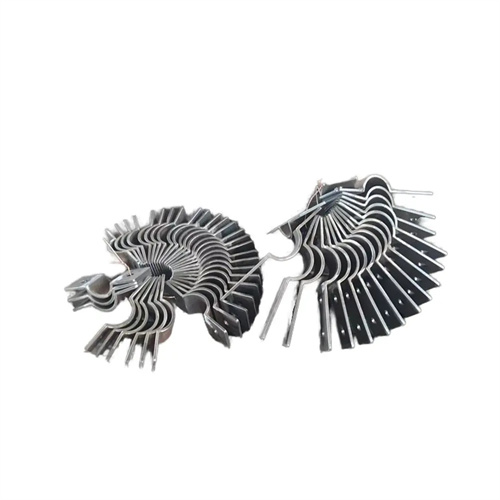Copper and copper alloy drawn rods
Copper and copper alloy drawn rods are rod-shaped products produced through a drawing process. They feature high dimensional accuracy, excellent surface quality, and superior mechanical properties, making them widely used in machinery manufacturing, aerospace, instrumentation, and other fields. A wide variety of materials are available, including pure copper drawn rods (T2, T3), brass drawn rods (H62, H65, HPb59-1), bronze drawn rods (QSn4-3, QAl9-4), and cupronickel drawn rods (B19, B30). Pure copper drawn rods offer excellent electrical conductivity and are suitable for use in conductive components in the electrical industry. Among brass drawn rods, HPb59-1, due to its moderate lead content, offers excellent machinability and is commonly used in the manufacture of various precision parts. Bronze drawn rods offer excellent wear and corrosion resistance, making them suitable for the manufacture of wear-resistant components such as bearings and bushings. Cupronickel drawn rods, with their excellent corrosion resistance and aesthetic appearance, are often used in decorative and corrosion-resistant applications. The diameter of the drawn rods usually ranges from 3mm to 100mm, and the length can be customized according to needs, generally 1-6 meters.

The production process for drawn copper and copper alloy rods primarily involves billet preparation, drawing, and annealing. First, high-quality copper and copper alloy ingots or hot-rolled bars are selected as billets. The billets undergo surface treatment to remove scale and oil to ensure a smooth drawing process. Next, appropriate dies and drawing parameters are selected based on the target diameter and material properties. During the drawing process, the drawing speed (typically 5-15 m/min) and pulling force must be carefully controlled to prevent defects such as cracks and shrinkage. For drawing processes involving significant deformation, an intermediate annealing treatment is required. The annealing temperature ranges from 300-600°C, depending on the material, to eliminate work hardening and restore the material’s plasticity. After drawing, the bars are straightened to ensure a straightness of ≤1 mm/m, then cut and polished to a surface finish of Ra ≤0.8 μm. Finally, the finished bars undergo dimensional inspection, mechanical property testing, and non-destructive testing to ensure product quality meets requirements.

In the field of mechanical manufacturing, drawn copper and copper alloy rods are important materials for producing precision parts. In machine tool manufacturing, drawn brass rods (such as HPb59-1) are often used to make transmission components such as lead screws and nuts. Their excellent cutting performance ensures part precision. One machine tool manufacturer produces precision lead screws using 20mm diameter HPb59-1 drawn rods, achieving IT5 precision. In mold manufacturing, drawn bronze rods (such as QSn4-3) are used for mold cavities and cores due to their excellent wear resistance and polishing properties. This has resulted in a 30% increase in the service life of plastic molds produced by one mold manufacturer. Furthermore, drawn copper and copper alloy rods are widely used to make various transmission components and wear-resistant parts in printing and textile machinery.

The aerospace industry places extremely high demands on the performance of drawn copper and copper alloy rods. In aircraft engines, drawn cupronickel rods (such as B30) are used to make fuel system components due to their excellent corrosion resistance and high-temperature strength. One airline’s engine fuel system uses 10mm diameter B30 drawn rods, extending their service life to over 2,000 flight hours. In spacecraft, pure copper drawn rods are used to make conductive and heat dissipating components, leveraging their high electrical and thermal conductivity to ensure the proper functioning of spacecraft electronic systems. For example, one satellite’s power system uses 5mm diameter T2 pure copper drawn rods, increasing reliability by 20%. Furthermore, copper and copper alloy drawn rods are used to make precision transmission and sensor components in missile and rocket guidance systems.

With the development of high-end equipment manufacturing, the performance of copper and copper alloy drawn rods has been continuously optimized, and their application scope has continued to expand. To meet the needs of deep-sea exploration equipment, high-strength, corrosion-resistant copper alloy drawn rods have been developed. Their tensile strength is ≥600 MPa, and their corrosion rate in seawater is ≤0.01 mm/year. The use of this material in a deep-sea detector has significantly improved the reliability of the equipment. In the medical device sector, lead-free copper alloy drawn rods are increasingly widely used, meeting medical safety standards. A medical equipment manufacturer has successfully achieved FDA certification for surgical instruments produced using lead-free brass drawn rods. Furthermore, through improved production processes, the dimensional accuracy of drawn rods has been further improved, with diameter tolerances now controlled within ±0.005 mm, meeting the manufacturing needs of more precise parts. In the future, with the continued development of aerospace, deep-sea exploration, and other fields, the performance requirements for copper and copper alloy drawn rods will continue to rise, driving the development of higher strength, higher precision, and greater corrosion resistance.
